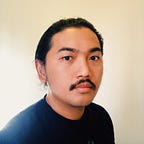Why I Map
Snow, cholera, and London. It should always start with that. The most popular way to start a presentation or article on mapping is to begin with Dr. John Snow and his 1854 cholera map of Soho. All geography, mapping, and urban planning lectures must somehow mention the story. It is really tempting to do that here. Besides, a mutation of “a long time ago in a galaxy far, far away” or “everything changed when the fire nation attacked” could be really useful.
*must… resist… temptation… to show the work… of… John Snooow…*
But I went to Soho the other day to look for the pump. It wasn’t there. Even if the pump is gone, the good thing was that there’s a pub that was named after Dr. Snow. And the tap had the map!
The place could qualify as a pilgrimage site for all mappers and map lovers (and lovers of mappers?). Having paid homage to the legend (by visiting the place and writing about it), I could now proceed to what I really want to say.
This is a personal blog. In this space, I’d like to share things that I’m working on or any spatial thing that I fancy.
Why am I doing this? I’ve been in the “spatial” field for almost ten years now. Geography was my undergrad. Urban planning was my postgrad; I obtained my professional license after that. While studying, I taught GIS, geomorphology, and geographies of health. Then, in 2013 I worked as mapper and urban planner for and in the first places hit by Super Typhoon Haiyan, which was by then the strongest cyclone to make landfall in history. That work was with the UN, which also gave me the opportunity to do urban design and development for key cities in the Philippines. Now, I’m finishing my MSc on geospatial analysis in London. I guess that the deeper reason for blogging is that the years have gone by so quickly, and I didn’t make the time (and space!) to write about the experiences and reflections.
In short: we’re ageing, so we do writing as raging against ageing haha.
The stories here will be about critical, computational, and creative cartographies; and the crossings of the three. And some of the maps I made about them. To wit:
Critical Cartographies
It’s about geographic thought, key concepts, spatiality of ideologies, mapping ethics, environmental issues (such as disaster and climate risks), etc. While maps are being presented as “facts” and professional works, there are really important things happening behind the scenes that affect how we use and live with maps. Maps are not just data and colour. They’re products of choices and contexts of actors who wield power and influence in pursuit of goals and beliefs. And those choices can affect people who don’t map. I want to show not only the meal but also what happens in the kitchen. Blue pill or red pill? How about a third pill?
Computational Cartographies
The spatial industry keeps reinventing itself and is tirelessly spurning out projects and studies that are tagged with the following: geospatial, geographic information systems, geointelligence, geocomputation, geoanalytics, geomatics, geosensing, spatial data science, building information modelling, etc. It’s really a challenge to keep track of and keep training in such “technologies of geography” or “geographies of technology”. The sustained proliferation of “geo-tools” are letting more people — mathematicians, physicists, programmers, designers, artists, etc. — into the community of practice. And they’re stealing our jobs (which is wonderful!). As for me, I just want to be happy (and mappy).
Seriously, in pursuing a spatial career (or while working with professionals in that career), it’s good to be both cynical and excited about the developments in those fields.
Creative Cartographies
So we go from the kitchen to the meal. This is about visualisation, map art, non-visual maps, community maps, new geographies, etc. This is the part that I find really meaningful and enjoying.
Cheesy Closing
In relation to the John Snow story, there’s another popular term that’s being used when writing about geographic things: spatial is special. Maybe, it’s because we, geographers, are always struggling, asserting, and reinventing our identities. It’s good to have a creed to live by when you know that your disciplinary ancestors were making maps for colonial and imperial projects; and that their contemporaries haven’t learned the lessons by operating drones that kill civilians.
Spatial is special is in an awful lot of books, blogs, and lectures. It’s also a good mantra and sales pitch. It’s our version of “Our Father”, “Live Long and Prosper”, or “Valar Morghulis”. So let’s not end this post with that overused term.
To conclude: by going from critical, computational, to creative cartographies , I’d like to share with you mappy things, from the subterranean; to the surficial; and to the stratospheric, so to speak.
Over the years, I’ve acted as if geography is a way of life. That’s why I map. And this blog is about that life choice.
(Because spatial is special! I say this with both excitement and care. I can’t resist the temptation.)
Next blog post
Plotting the coordinates that are tattooed on Angelina Jolie’s left deltoid.
(originally posted in my old Medium publication, Spatialist, in 2017)
